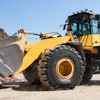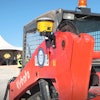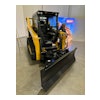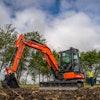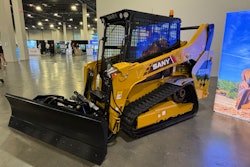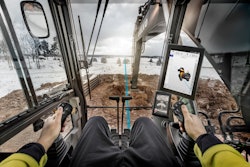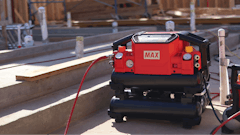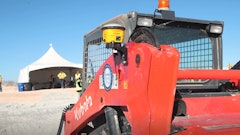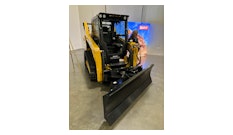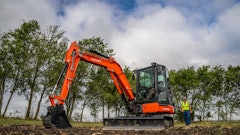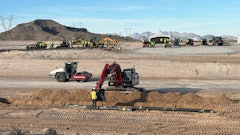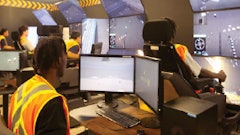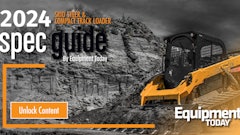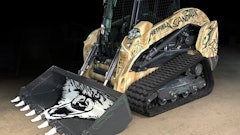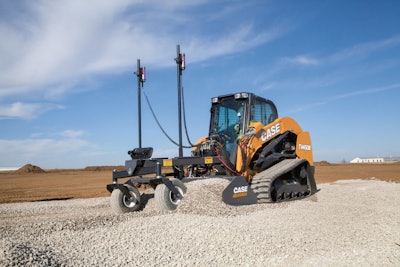
Snow removal, landscaping and construction forums are full of discussions about how to keep attachments from clogging and grinding work to a halt.
Any work that feeds material into the processing part of the attachment while the machine is moving — including snow blowers, flail mowers, cold planers, brooms, tillers and soil preparators — is prone to problems caused by operating too quickly.
It happens in an instant and, at best, creates frustration. At worst, malfunctioning attachments cost operators time and money, and over the long-term creates extra wear and tear on machines that need to function at top performance. Jobs may not be done completely, leave a poor appearance of the completed work or even mask that the work was haphazard. When this happens, reputable companies will have a foreman, job manager or extra employee using valuable time to check and recheck the machine’s work.
And in the end, operating a machine and attachment like this without proper control simply is not safe.
Without the aid of creep control, operators trying to manage much slower ground speeds do not work well over long days. Machines with these attachments normally operate at 10% to 25% of their normal speed and can lead to stalling the attachment.
Why Clogs Happen
Attachments can clog or bind if too much material is handled too quickly. Determining how much is too much material is where problems arise, and often depends on multiple factors: the experience of the operator, the density of the materials and the aggressiveness of the cut (or portion of work being processed).
Creep control limits the vehicle ground speed to a fraction of its normal maximum operating speed. But it can be difficult for operators to manually control this slower ground speed with the precision needed to maintain efficiency. Without creep control, an operator must hold the controls just off center point, requiring extra concentration, grit and determination — which can be hard to muster when there already is a lot happening around the jobsite.
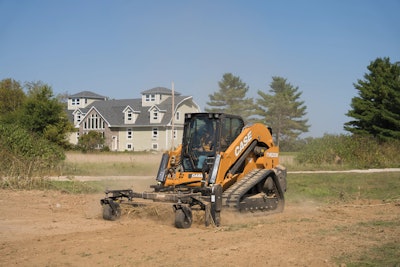 Creep mode adjusts the engine speed (rpm) to maximize and optimize the attachment motor speed while controlling ground speed separately.Case CE
Creep mode adjusts the engine speed (rpm) to maximize and optimize the attachment motor speed while controlling ground speed separately.Case CE
Stopping Clogs Before They Start
The solution to clogging is smart creep control software, which smoothly and efficiently determines the optimal machine speed for conditions and allows adequate processing speed of the material — for example, snow into a snow blower, dirt into a tiller, asphalt into a cold planer, or loose material on pavement for a broom.
Some equipment manufacturers, for example, offer automatic creep control that enables the operator to set the machine speed at a consistent/slow “creep” while independently setting attachment speed via the throttle. The best creep control systems enable a user to adjust this ground speed in small increments, allowing very precise tuning for the application and environment. It will also retain the previous setting, so operators consistently using an attachment only need to make minor creep adjustments when they arrive at each new job. This allows for optimal use of hydraulic attachments, such as cold planers and brooms, for the greatest efficiency and least amount of time during setup.
Examples of the environmental changes that could reduce the proficiency of the attachment include: snow that is heavier due to higher water content caused by warmer weather; heat on a jobsite, which can also affect operating speed for attachments like cold planers or tillers; and high ambient temperatures, which can cause hydraulic system temperatures to rise and could cause reliability issues.
Creep Functionality: 3 Productivity Enhancements
Some operations may dictate a consistent ground speed every time the attachment is used, while other operations may require changing ground speed to meet the needs of the specific site.
- The ability to use creep control to independently control an attachment’s hydraulic motor and machine ground speed improves both the efficiency and control of the production/processing activity of the attachment. This prevents the machine from jumping and the attachment from jamming.
- Operators using creep control software can maintain a consistent auxiliary hydraulic flow rate (often a high value) while limiting the ground speed to a low range of maximum speeds — generally up to about 3 mph versus customary speeds of 8 to 20 mph.
- Creep control allows operators to easily and consistently adjust ground speed to match equipment progress based on environmental conditions. The newest versions even provide operators a value on the display as reference, increasing consistency of operation. For example, operators will often adjust ground speed when using a cold planer on asphalt, allowing them to move more slowly when making deeper cuts, and managing the increased material, heat and cuttings during operation.
Considerations for Creep Mode Operation
Guidelines for when to use creep mode operation include any time a hydraulic motor-driven production attachment is in use and the machine can move faster than the “processing” power the attachment can handle. Creep mode adjusts the engine speed (rpm) to maximize and optimize the attachment motor speed while controlling ground speed separately.
Operating specifications and requirements are dictated by the type of attachment or the manufacturer operating specifications. Engine rpm, which affects hydraulic pump flow to the attachment hydraulic motor, will need adjustment to satisfy specific attachment operating performance.
Material and jobsite conditions will influence machine operating speed and hydraulic attachment performance at different speeds. Monitor machine operating temperatures (coolant, hydraulic) and ensure the machine maintains appropriate temperature range during creep and attachment operation.
In general, creep control promotes more precise control of the machine. When operating machines at higher engine speeds, they operate more erratically and can cause issues for operators with a jerky, too-responsive operation. Some operations may even see the value of creep without an attachment when the machine is being operated in very close proximity to structures.
